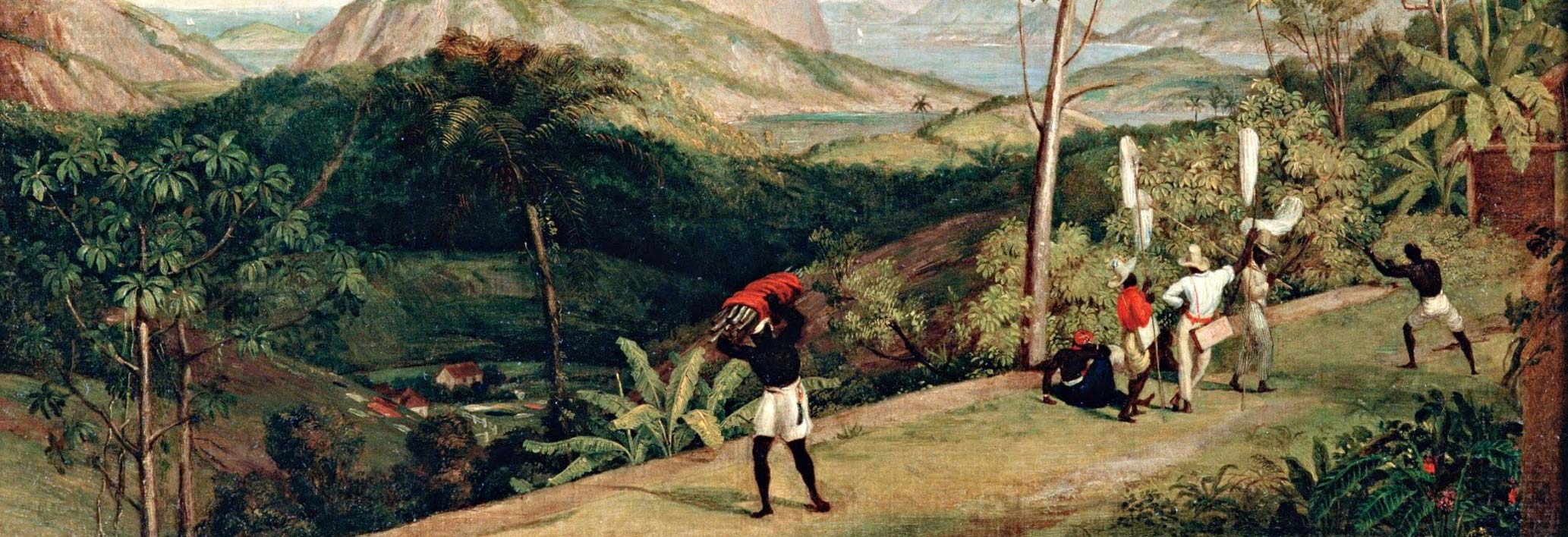Virginie Gameren (c. late 1820?s—?), an enslaved woman who obtained her freedom through an administrative procedure against her owner, was born on Curaçao presumably in the late 1820s. Nothing is known about her parents. What is known about Virginie comes from the documents of the administrative procedure leading to her emancipation and an 1860 request to travel from Suriname to the Netherlands. The request shows that she had given birth to four children; no birthdates are mentioned.
Virginie was part of the household of Baron R. F. van Raders, who was lieutenant governor of Curaçao. In 1845 he was appointed governor of Suriname, and upon his departure he left Virginie behind with his daughter, who had just married Baron D. J. Rengers. In 1847 Lady Rengers went to the Netherlands for a family visit and took Virginie with her.
The practice of wealthy families traveling with slaves was not uncommon. Research shows that in the eighteenth century, 450 to 750 nonwhite travelers entered the Netherlands over a fifty-year period. According to a decision of the High Court of Mechelen of 1532, slavery did not exist in the European part of the kingdom. Still, slave owners argued that the colonial laws should apply to their “property” in the Netherlands as well. A series of regulations was made to clarify this situation. In 1776 it was declared that enslaved people who had legally traveled to the Netherlands were free, even when they returned to the Caribbean, under the condition that they had stayed for six months and had obtained their freedom papers. Later regulation increasingly restricted the traveling of slaves. Finally, the 1830 Dutch civil code stated inarguably that every person on Dutch soil was free.
Virginie had been in the Netherlands under six months in 1847 when Lady Rengers sent her back to the Caribbean—not to Curaçao, however, but to Van Raders’s new home in Suriname. In 1851Governor Van Raders was made to step down after a dispute, but he received honors for his services, and he planned to return to the Netherlands. The governor wanted Virginie to move from the capital, Paramaribo, to work for his son in law in the countryside, but Virginie wanted to return to Curaçao. When Van Raders refused, she turned to the government, originally to secretary A. Kikkert Schotborgh, who in turn informed the interim governor, Ph. de Kanter, and demanded her freedom papers, arguing she had been legally free since her stay in the Netherlands. She also argued that her two children had the same rights, because their mother was free. This was a bold step to take, standing up to a former governor and taking action through the administration that he, until recently, had led. Still, Virginie’s argument was taken seriously by senior officials. When asked for a response, Van Raders invoked the outdated law of 1776, and additionally declared she was unworthy of freedom because of how she had treated his daughter, and because of her bad character. His reasoning could be interpreted as a sign that Virginie did not behave in a submissive way, and that she may have previously brought her right to freedom to the family’s attention while she was in the Netherlands. Perhaps Van Raders saw Virginie’s nonsubmissive behavior as a personal affront.
The Netherlands had been under international pressure to abolish slavery, but it took the government years to reach consensus about the details. As part of the government, Van Raders was one of the leaders in this process, and he was known to be pro-emancipation, but at the same time he was conservative and headstrong. In the case of Virginie, after many letters between senior officials in Suriname, Curaçao, and the Netherlands, the ministers of colonies and justice ultimately decided in favor of the plaintiff. This is corroborated by a document drawn up by an emancipatory commission of which Van Raders was a member, stating that Virginie and her two firstborn children were freed in 1852.
However, it seems Van Raders did not complete this manumission process, as the names of Virginie and her children are absent from the manumission records. Eight years later, in 1860, Virginie took action again and applied for a surname for herself and her four children, although the oldest two were no longer alive. The document states that her children were born free—Virginie must have insisted on that.
Virginie’s life, working for the governor’s family, must have been very different from the hardships of a field slave. But the principle of freedom was something she kept fighting for, for herself and her children, even after their deaths. Many questions remain regarding the thirteen years it took to finalize the process. When and where did she learn about her rights? Were consecutive pregnancies and motherhood the reasons for the pace of her actions? Or was Van Raders personally responsible for delaying her road to freedom?
It is not known when Virginie died.
Read the full, original biography by Valika Smeulders in the The Dictionary of Caribbean and Afro-Latin American Biography.Bibliography
Hondius, Dienke. “Access to the Netherlands of Enslaved and Free Black Africans. Exploring Legal and Social Historical Practices in the Sixteenth–Nineteenth Centuries.” Slavery and Abolition 32, no. 3 (2011): 377–395.
Oostindie, Gert, and Emy Maduro. In het land van de overheerser. Vol. 2: Antillianen en Surinamers in Nederland, 1634/1667–1954. Dordrecht, The Netherlands: Foris, 1986.
Preedy, S. E. Negers in de Nederlanden 1500–1863: Een waarschuwing en een aansporing. Nijmegen, The Netherlands: Uitgeverij Masusa, 1984.
ten Hove, Okke, and Frank Dragtenstein. Manumissies in Suriname, 1832–1863. Paramaribo, Suriname: VACO, 2007.
Author
Valika Smeulders
Adapted by
Jennifer Mojica Santana
Contributing Institutions
Hutchins Center for African & African American Research, Harvard University, Cambridge, MA.
Oxford University Press (USA) African American Studies Center





